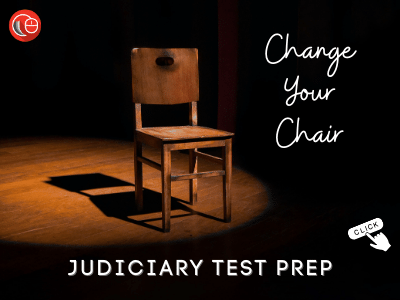
This article has been written by Shubham Khunteta, a student of National Law University Odisha, Cuttack, in which he talks about the hybrid nature of ‘trespass,’ its meaning, types and defenses with the help of case laws.
Introduction
It is often seen that one wants to protect one’s body and property, whether movable or immovable. People usually seem anxious as to their person or property being vulnerable to negative elements, who are willing to misappropriate and exploit their wealth with a Mala Fide intention. This apprehension of large sections is what is required to be dealt with the iron hands of the law.
The law takes care of the acts which are to be recuperated with compensation or punishment. These acts can lie from a mere intentional touch to one’s person with an evil intention of intrusion into one’s property without assigning any reason for the action.
The law is often applied and has evolved to strike a delicate balance between the private rights to the exclusion of others and the socially valuable public and private interests that are sometimes served by permitting unauthorized instances of access. Therefore, it becomes extremely necessary to identify the precise problem and its solution.
Public interest often trumps the private interest and is widely recognized by law to be the distinctive exception to the owner’s “Right to exclude.” Trespass is a varied topic involving both civil and criminal elements. What distinguishes criminal trespass from civil trespass is that in the former, the entry should be with intent to commit an offence or to intimidate, insult or annoy the person in possession of the property[1].
Trespass is both a civil and criminal wrong because it can cause injury, i.e., violation of legal rights as well as damage to one’s person and property substantially if a physical attack takes place.
Trespass law is commonly presented as a relatively straightforward doctrine that protects landowners against intrusions by opportunistic trespassers
Meaning and Interpretation
Trespass can be said to be an action exceeding the limit carved by the law. It is an intentionally directed, unreasonable interference with one’s person and property. The word ‘intention’ here implies committing the wrong voluntarily. Trespass allegation can be leveled if the interference is with one’s and third person’s body and private property. It is to be kept in mind that intention forms the essential component of trespass. Unreasonable behavior is triggered by the mala Fides and ulterior intention to harass another.
Types of Trespass
Trespass Against Person
It is the causing of apprehension of unreasonable interference with one’s person and body as well as a third person and includes usage of force causing damage and impairment in the body. The trespasser, with an ulterior intention, transgresses the right of another and makes an alteration in it with the objective to cause wrongful loss or wrongful gain as the case may be. It is considered as intentional even if the wrongdoer did not know that the property belonged to another.
Assault: It is the causing of unreasonable apprehension of body injury and damage in the mind of another person and usually a prelude to a battery. It can be given effect in a way that would make certain actions and indications as suggestive of assault by another. It can be both direct and indirect. It can be carried out by the person himself or through a third person.
Here, an important factor of foreseeability causing apprehension is required as it is essential that one is able to conceive after seeing something that it is causing unreasonable fear. Section 351 of Indian Penal Code defines assault[2].
Essentials of assault include:
- Intent
- Apparent ability to carry out the purpose
- Apprehension
- Knowledge of threat
An example of foreseeability in trespass: A man directing a gun and about to trigger it, behind a person is not foreseeable to the person. This can’t be said to be an assault as there is no apprehension in the mind of that person that somebody is doing such an act which would instill fear in him.
Battery: The use of force on the person of another without lawful justification. Battery consists of touching another person hostilely or against his will directly or indirectly, however, slightly. Direct force can be like slapping a person whereas indirect force is like setting a dog behind a person or spitting on a person. Battery corresponds to ‘use of criminal force’ according to Section 350 of the Indian Penal Code[3]. What is necessary is that the wrongful act must involve physical contact.
Essentials of battery include:
- Direct or indirect physical contact without lawful justification
- Use of force
- It must be voluntary
Accidental touch or push in the market is not wrongful and does not constitute battery.
False Imprisonment: When someone’s way is restricted unlawfully from all possible directions so as to prevent him/her from moving in a direction for some period, however short, it is called false imprisonment. In the Indian Penal Code, it is defined as wrongful confinement.
 Article 22 of the Indian Constitution provides for protection against unlawful arrest and casts an obligation upon the state to follow due procedure while carrying out arrest related activities[4]. Section 43, CrPC provides for arrest by a private person if the offender is a proclaimed habitual offender and is alleged to be liable for a cognizable and non-bailable offence.
Article 22 of the Indian Constitution provides for protection against unlawful arrest and casts an obligation upon the state to follow due procedure while carrying out arrest related activities[4]. Section 43, CrPC provides for arrest by a private person if the offender is a proclaimed habitual offender and is alleged to be liable for a cognizable and non-bailable offence.
Essentials: Complete restraint of liberty of person and unlawful restriction
Defence against trespass to body[5]–
- Consent of Plaintiff: When plaintiff consented with the defendant on the specific act then defendant can’t be said to be trespassing if there is a mutual understanding between the parties for the act.
- Contributory negligence: When there is a negligence of plaintiff included in the act, then defendant’s liability can be mitigated to the extent and compromise can be arrived at or liability can be divided.
- Self-defence: A person, to protect himself from an unruly element or any other such person or incidents, can trespass on the property to preclude the act from consummation. But, proportionality and probability should be kept in mind while using the property of the plaintiff to intrude and so it is to be proved by the defendant that there was no other option with the defendant other than to intrude in the property of plaintiff.
- Statutory authority: Authorities compelled by the law to carry out search and seizures and cases where consent is taken to conduct a bodily search would not be construed as a trespass on the body of a person. Entry in public places and private property used for a commercial purpose is not trespass considering the societal and public interest in mind.
- Preservation of public peace
Trespass Against Property
Trespass against movable property like goods[6]
It is the taking wrongfully or forcefully interfering with the goods of another. It differs from trespass to land in one important aspect that wrongful intention or negligence is not necessary for trespass to goods. A challenge to ownership of goods amounts to conversion which is different from trespass to goods, which can be elucidated by an example of the damage of goods given by the plaintiff in a cloak room of railways but personnel there instead of giving it, threw it and damaged it.
Trespass against immovable property like land[7]
Legal maxim ‘Quare clausum fregit’ defines land as, “Land includes not only the surface and any buildings on it but also the airspace and subsoil, in so far as these are vested on the plaintiff. The action of trespass to land penalizing direct interference with other people’s land.”
 Trespass is mainly a wrong against possession and is available at times against the owner himself. Court in the case[8] opined that “The correct position in law may, in our opinion, be slated thus in order to establish that the entry on the property was with the intent to annoy, intimate or insult, it is necessary for the Court to be satisfied that causing such annoyance, intimidation or insult was the aim of the entry; that it is not sufficient for that purpose to show merely that the natural consequence of the entry was likely to be annoyance, intimidation or insult, and that this likely consequence was known to the persons entering: that in deciding whether the aim of the entry was the causing of such annoyance, intimidation or insult, the Court has to consider all the relevant circumstances including the presence of knowledge that its natural consequences would be such annoyance, intimidation or insult and including also the probability or something else than the causing of such intimidation, insult or annoyance, being the dominant intention which prompted the entry”.
Trespass is mainly a wrong against possession and is available at times against the owner himself. Court in the case[8] opined that “The correct position in law may, in our opinion, be slated thus in order to establish that the entry on the property was with the intent to annoy, intimate or insult, it is necessary for the Court to be satisfied that causing such annoyance, intimidation or insult was the aim of the entry; that it is not sufficient for that purpose to show merely that the natural consequence of the entry was likely to be annoyance, intimidation or insult, and that this likely consequence was known to the persons entering: that in deciding whether the aim of the entry was the causing of such annoyance, intimidation or insult, the Court has to consider all the relevant circumstances including the presence of knowledge that its natural consequences would be such annoyance, intimidation or insult and including also the probability or something else than the causing of such intimidation, insult or annoyance, being the dominant intention which prompted the entry”.
No one has the right to dispossess the trespasser if he is in a settled possession of a property and he can’t be evicted unless due process of law is followed. The possession, which a trespasser is entitled to defend against the rightful owner must be a settled possession extending over a sufficiently long period and acquiesced in by the true owner. A casual act of possession would not have the effect of interrupting the possession of the rightful owner[9].
Under the doctrine of prescriptive easements, for example, a property owner loses the absolute right to exclude (all other persons from taking possession of his land) when a non-owner has used that land openly, peaceably, continuously, and under a claim of right ad- verse to the owner for a period set forth by a particular state (known as the prescription period). It was held by the High Court of Bombay in case[10] that a rightful owner who dispossesses another cannot be treated as a trespasser except as provided by Section 9 of the Specific Relief Act, 187.
Case Laws on Trespass
Sentini Cermica P. Ltd. Vs Kunchi Krishna Mohan and Ors[1]: Statutory Authority: Search and seizure on the premises of appellant do not constitute an act of trespass. It can’t be said that any procedure carried out to find the truth on the property will be construed to be an act of trespass if the act is carried out with sufficient legal backing.
Amit Kapoor Vs Ramesh Chander and Anr[1]: Merely because there was a civil transaction between the parties, it would not by itself alter the status of the allegations constituting the criminal offence.
Samira Kohli Vs. Dr. Prabha Manchanda and Anr[2]: The performance of hysterectomy and salpingo-oophorectomy on a patient was an unauthorized invasion on her person by the doctor, and it can be deduced to be an assault and consequential battery. Her consent was required as she was an adult and although the doctor acted in the best of patient’s interests and can be considered to be mitigating circumstances to reduce compensation, however, in the interests of justice, the patient is entitled to the compensation.
Rajinder Kumar Malhotra vs. Indian Bank & Ors:[3] Petitioners were licensed to operate kiosks through auction, and their right was taken away by the government corporation after the revocation of license on the expiry of the license period. Here the court made a distinction between license and lease and held that the license does not create possession and it is the discretion of the authority to revoke the license and dispossess the petitioner if any irregularity or discretionary act guides them to do so. A lease creates a possessory, inviolable and a settled right on the person to whom it is granted, whereas a license has a different footing altogether. A leased property can’t be trespassed on without lawful justification and exhortation of public need. On the other hand, a licence neither creates ownership nor possession rights in favour the person to whom it is granted. As a result, it can’t be said that the petitioner’s right has been trampled upon by trespassing on the property.
Section 9 of the Specific Relief Act protects the possession of the tenant from the deprivation by the owner even after the cessation of tenancy. However, there needs to be settled possession in it of the tenant, and this possession is juridical and is protected by statute.
Bavisetti Venkat Surya Rao v. Nandipati Muthayya[4]: Plaintiff owed a certain amount to the defendant which he was unable to pay. The defendant, in order to collect the amount thought to visit plaintiff’s house and sell some movables to recoup the amount. The defendant called a goldsmith to evaluate the value of gold in the house of plaintiff, but the person standing at the time of such evaluation near the house borrowed the amount from another to give it to the defendant, and after the defendant had taken the amount, the plaintiff sued him for assault.
It was held that since the defendants, after the arrival of the Goldsmith said nothing and did nothing and the threat of use of force by the goldsmith to the plaintiff was too remote a possibility to have put the plaintiff in fear of immediate or instant violence, there was no assault.
Bird v. Jones[5]: The claimant was trying to go through the enclosure, but the defendant put two police officers to block the claimant’s path and prevent him from entering further into the field. He was told that he could go back but not forward. After half an hour the Claimant tried to push past whereupon he committed an assault on the Defendant and was arrested.
The court said that it is false imprisonment for a person to be forced to stay in a place just as much as locking them in a room. There need not be any touching either. However, it cannot be a false imprisonment to avert a person from going forward but allowing them to return the way they came, even if it is unlawful to stop them. The person no doubt suffers a wrong but not false imprisonment, possibly assault or battery if he is endangered or touched as he tries to get past. So here it was held that there was no wrongful restraint or confinement.
Read v. Coker:[6] D and his men surrounded P, rolling up their sleeves, and threatened to break P’s neck if he did not leave. P was a rent collector who entered D’s workshop and refused to go until the rent was paid.
It was held that this was an assault: the condition attached to the threat was not enough to nullify it.
Conclusion
Trespass can be faced by people innumerable times in a day, but what is important is to truly understand the nature of trespassed act, property, loss and impact of it on the plaintiff. If the nature of the act is itself suggestive of a wrongful incident, voluntarily undertaken to constrain the enjoyment of the right to exclude from the private property, then evaluation of all possible recourses to recoup the damage should be identified. The four tests[18], when deciding trespass disputes, courts should evaluate the following factors: (1) the nature and character of the trespass; (2) the nature of the protected property; (3) the amount and substantiality of the trespass; and (4) the impact of the trespass on the owner’s property interest.
It would help to uncover various facets and understand the dimensions that trespass law is clutching in its circuitous surrounding so as to loosen the screws and solve cases and situations in an efficacious manner. The true meaning of each term needs to be understood to evaluate trespass and resolve the cases by applying the relevant doctrines.
LawSikho has created a telegram group for exchanging legal knowledge, referrals and various opportunities. You can click on this link and join:
https://t.me/joinchat/J_
Footnotes:
[1] Ram Balak alias Gauri Shanker vs Delhi Administration (1980)ILR 2Delhi1219
[2] See, Sec 351 of Indian penal Code 1860
[3] See, Sec 350 of Indian penal code 1860
[4] D. K. Basu v. State of West Bengal (1997) 6 SCC 642
[5] <http://www.legalservicesindia.com/article/article/concept-of-trespass-to-person-1073-1.html>accessed on 6/06/2016
[6] S. C. Thanvi, Law of Torts, p. 660
[7] S. C. Thanvi, Law of Torts, pp. 658-660
[8] See, Supra 1
[9] S.S. Tewari vs Om Prakash Srivastava and Anr., 1979 ACR 419
[10] Bandu v. Naba, (1890) 15 Bom. 238
[11] Sentini Cermica P. Ltd. Vs Kunchi Krishna Mohan and Ors., 2015(2)RCR(Criminal)150
[12] Amit Kapoor Vs Ramesh Chander and Anr.(2012)9SCC460
[13] Samira Kohli Vs. Dr. Prabha Manchanda and Anr, AIR 2008 SC 1385
[14] <https://indiankanoon.org/doc/96343465/>accessed on 5/06/2016
[15] AIR 1964 AP 382
[16] (1845) 7 QB 742
[17] <http://lawrevision.weebly.com/read-v-coker.html>accessed on 6/06/2016
[18] Depoorter, Ben. “Fair trespass” Columbia Law Review 111, no. 5 (2011): 1090-135. http://www.jstor.org/stable/41305148.
Students of Lawsikho courses regularly produce writing assignments and work on practical exercises as a part of their coursework and develop themselves in real-life practical skills.
LawSikho has created a telegram group for exchanging legal knowledge, referrals, and various opportunities. You can click on this link and join:
Follow us on Instagram and subscribe to our YouTube channel for more amazing legal content.
 Serato DJ Crack 2025Serato DJ PRO Crack
Serato DJ Crack 2025Serato DJ PRO Crack







 Allow notifications
Allow notifications
